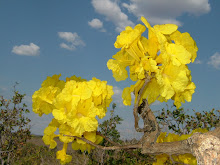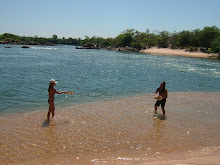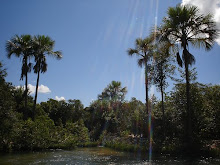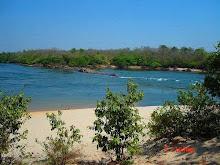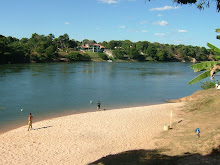Distante 636 km da capital Cuiabá e 550km de Goiânia, Nova Xavantina é um dos maiores potenciais do pólo turístico do Vale do Araguaia Mato-Grossense. Situada nas fraldas da Serra do Roncador, na bacia Amazônica, contém o lendário Garimpo dos Araés, foi morada dos irmãos Villas Boas e passagem do enigmático Coronel Fawcett em sua busca pelo Eldorado. Sua história tem origem com a chegada da Expedição Roncador-Xingu às margens do Rio das Mortes, em 1943. Pouco tempo depois, no dia 14 de abril de 1944, nasce na margem esquerda do rio o povoado de Xavantina, cujo nome foi escolhido em homenagem aos primeiros habitantes da região, os índios Xavantes. Com a abertura da rodovia BR-158, forma-se o povoado de Nova Brasília, à margem esquerda do Rio das Mortes. Posteriormente, por ocasião da instalação do município, ocorrida em 03 de março de 1980, as duas povoações são unidas e a cidade tem seu nome composto por palavras que compõem seus dois setores: Xavantina e Nova Brasília. Os inúmeros caminhos de Nova Xavantina le Rio das Mortes, represas, lagos, córregos, grutas e cachoeiras.vam ao diálogo de séculos de história e cultura que encanta a todos.
Este imenso e rico acervo a céu aberto.
Informações Úteis:
É recomendada a vacina contra a febre amarela.
Condições Climáticas: A temperatura média durante o ano é de 27ºC, podendo chegar perto de 10ºC no inverno e alcançar mais de 40ºC no verão.
Estação da CHEIA (Dezembro a Março): as chuvas são intensas e parte do Mato Grosso fica submersa devido a sua grande quantidades de rios. A vegetação se revigora, e faz muito calor durante o dia. E por outro lado as aguas de MT sobem e mostra a sua outra cara, com paisagens encantadoras.
Estações de TRANSIÇÃO (Abril a Junho e Outubro a Novembro): em Abril, as chuvas param e o nível das águas começa a baixar formando lagoas, poças d´água e rios começam a abaixar. Já em Setembro, inicia-se a estação da Primavera e com ela as chuvas e a floração do Cerrado , formando um espetáculo único.
Estação da SECA (Julho a Setembro): é o melhor período para a observação da vida selvagem. A falta de chuvas encolhe as lagoas, e rios, revelando a planície e facilitando o transporte por terra. A partir de Agosto as árvores florescem e se intensifica a seca que se estende até Outubro. Os frutos do cerrados são os melhores e mais exóticos!
O cerrado se revigora e mostra a sua cara!
636 km distant from the capital of Cuiaba and Goiania 550km, Nova Xavantina is one of the largest tourist potential of the pole Vale do Araguaia-Mato Grosso. Located in the Serra do Roncador diapers in the Amazon basin, contains the legendary Garimpo do Araés, was home of the Villas Boas brothers and passage of the enigmatic Colonel Fawcett in their quest for ElDorado. Its history is rooted with the arrival of the Roncador-Xingu expedition on the banks of the Rio das Mortes, in 1943. Shortly later, on April 14, 1944, born on the Left Bank of Xavantina the village, whose name was chosen in homage to the region's original inhabitants, the Indians Xavantes. With the opening of the highway BR-158, as is the village of Nova Brasilia, the left bank of Rio das Mortes. Later, during the installation of the council, held on 03 March 1980, the two villages are united and the city has its name composed of words that make up its two sectors: Xavantina and Nova Brasilia. The many ways in Nova Xavantina the Rio das Mortes, dams, lakes, streams, caves and cachoeiras.vam to dialogue centuries of history and culture. This immense and rich collection of the sky.
Further Information: It recommended the vaccine against yellow .
Climate: The average temperature during the year is 27 ° C, reaching close to 10 C in winter and reach over 40 ° C in summer.
FULL Station (December to March): The rains are intense and part of Mato Grosso is submerged. If revigora The vegetation, is too hot during the day and mammals are obliged to shelter themselves in the shares higher, known as mountain ranges, making it difficult to draw comment. There is a predominance of birds, who are starting to build their nests. And secondly of TM the waters rise and shows its other face, with charming landscapes. Wastewater
TRANSITION (April to June and October to November): In April, the rains stop and the water levels begin to fall forming ponds and puddles of water. Back in September, will begin the season of spring and with it the rains and flowering of the Cerrado, forming a single show.
Station SECA (July to September) is the best time to observe wildlife. The lack of rain shrinks the ponds, and rivers, revealing the plains and facilitating the transportation by land. The fields begin to dry offering vast areas for grazing, where the mammals seek food and water in puddles of water remaining. Starting from August the trees bloom, and if the drought intensifies that extends until October.
The cerrado is invigorate and shows its face!
ARAGUAIA TURÍSTICA TURISMO RECEPTIVO DE NOVA XAVANTINA
CONTATOS:
TURa. FÁTIMA MESQUITA (66) 9215-5010
TURa. POLLIANNA ALVES (66) 9215- 8877
TURa. YUNA FREITAS
(66) 9953-7139
araguaiaturistica@gmail.com


